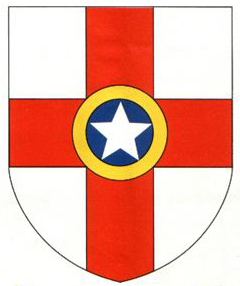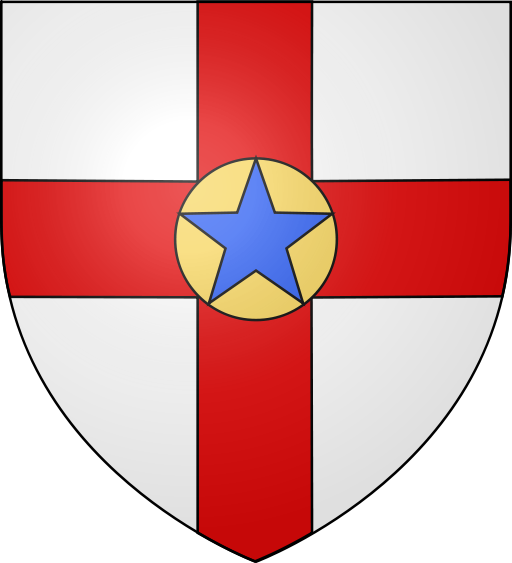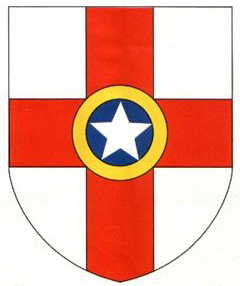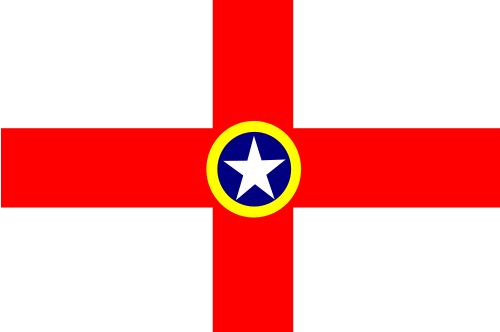EMBLEM & MOTTO OF MOSTA
MEANING & HISTORY

SPES ALIT RURICOLAM
The town of Mosta is represented by a full red cross on white background, with a superimposed central motif consisting of a white 5- pointed star over a dark blue background, enclosed in the wide yellow circle.
Each of these symbols has its own meaning:
The white star on the blue background at the very centre of the emblem represents the ascension to heaven of Our Lady, patron saint of Mosta, while the yellow circle represents the Rotunda Dome, the main parish church of town.
The red cross is also another testament to the devotion of the people of Mosta, and represents Christianity.
The origins of this and the greater majority of Maltese town emblems may be traced to the first half of the 1800s, when Nikola Zammit, a doctor, architect and philosopher from Siggiewi designed and coloured these graphic representations. Although not official, these emblems soon became popular and one of the earliest publications to feature them was Pietro Paolo Castagna's "Lis Storja Ta Malta Bil Gzejer Tahha" of 1890.
In his own publication "L'Arte", Zammit prominently features the newly built Rotunda, and affords it due praise.
Shown above is Zammit's
original design as represented in Castagna's work. It did not feature the yellow circle around the central
star, which in turn is inset within a dark blue square. The background colour
scheme was also silver and not white.
Over the years a number of variations developed, some including stars with 6 points instead of the 5, others having a the central star on a yellow circle, and with a dark blue, or grey background. Two such variations are featured below.
It is not known when exactly the yellow circle was added, or who introduced this feature. One of the first testimonials using this design dates from 1905, on Rafel Caruana Dingli's prominent silver votive lamp (lampier).
Another example dates from a few years later, when the same artist incorporated the same emblem in the silver frontispiece of the main altar.
It appears again on the front cover of Mons. Edgar Salomone's guide books, Musta: Its Memories and Charms (1910) & another published in 1916
This design was also kept when in 1975, a set of 6 silver votive lamps was made to mark the coronation of Our Lady. The emblem may be seen on each piece of this set and again on an additional lamp made in 1978.
Mosta's emblem may also be found on a number of festa props and statue bases / pedestals. It may be seen on the central square lion monument column, and in a number of flags, both old and modern. The oldest Mosta flag known to survive is held at the Government Primary School.
When the local council system was introduced, in the early 1990s, official Coats-of-Arms were designed for each locality. Several of these are based on older designs such as those by Zammit.

Above: In the case of Mosta, the 1993 example drew criticism, since it was felt that some of the symbolic qualities appearing in the earlier versions had been lost.
Below: The design was hence revised as per Legal Notice 96 (L.N. 96 of 2007), and is now the only official emblem for the town of Mosta.


Notes & References
L-Arma tal-Mosta - Joseph Borg, il-Mosta Newspaper, 1990